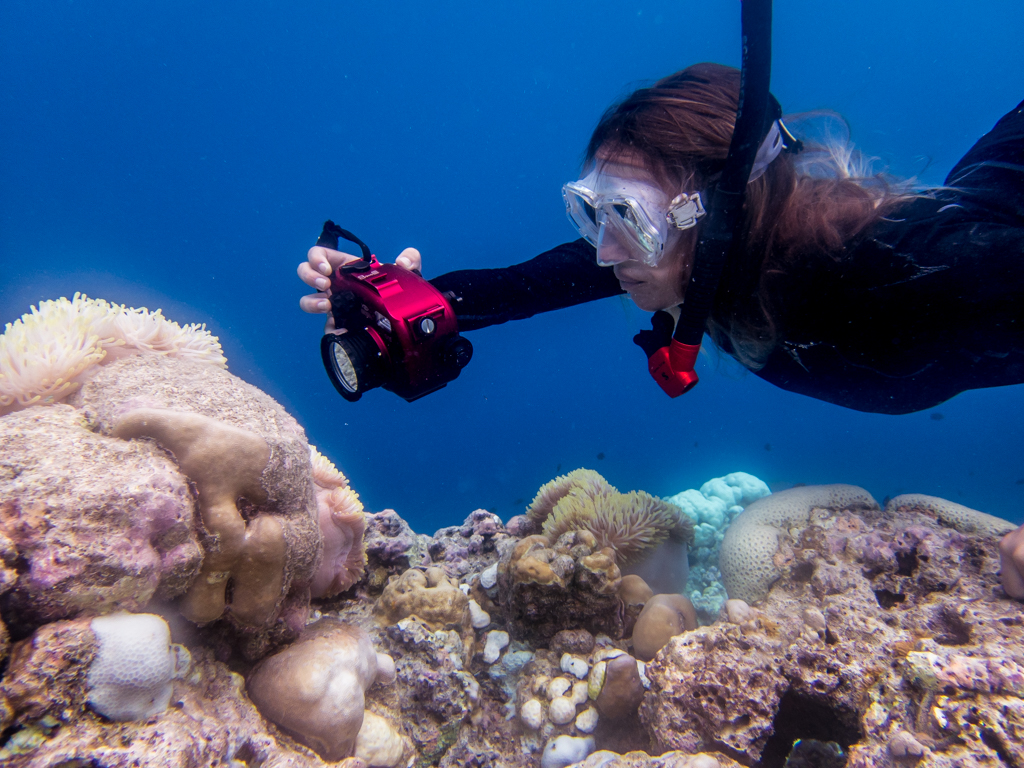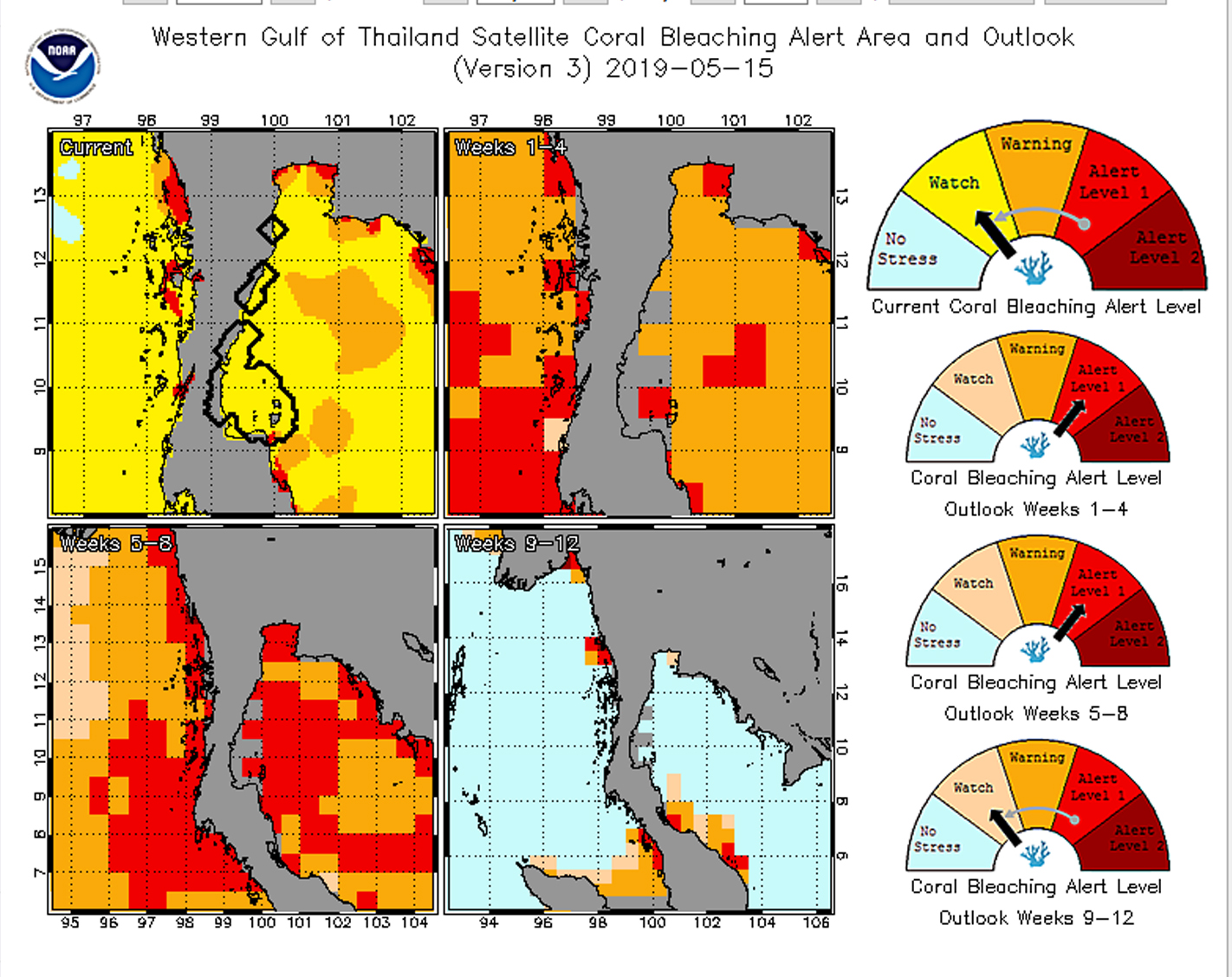Coral Bleaching on Koh Tao: May Update
Mass coral bleaching events are becoming more frequent and severe across the planet’s tropical oceans, and Koh Tao is no exception. Koh Tao has experienced several coral bleaching events over the last three decades, most notably those in 1998, 2010, 2014, and 2016. Now, it appears as though 2019 could be another bad year for the corals of our island as sea water temperatures have continued to heat up over the last few months. Coral bleaching is primarily a factor of sea water temperatures, with higher temperatures for long periods of time causing the most severe bleaching and mortality. So, we felt it was important to look at temperatures for the island over the last 20 years, using satellite data supplied by the U.S. National Oceanic and Atmospheric Administration (NOAA).
 We were able to download and analyze two datasets for the region, the first is from 2000-2010 from Koh Tao, and the second was from 2013-2019 for the Western Gulf of Thailand, as shown in the maps below. At the time (May 16th, 2019) the island was in a “Coral Bleaching Watch”, but significant bleaching has already been reported since early April, and the risk factor is high for the upcoming weeks.
We were able to download and analyze two datasets for the region, the first is from 2000-2010 from Koh Tao, and the second was from 2013-2019 for the Western Gulf of Thailand, as shown in the maps below. At the time (May 16th, 2019) the island was in a “Coral Bleaching Watch”, but significant bleaching has already been reported since early April, and the risk factor is high for the upcoming weeks.

Historical Temperature data for the region
The temperature data we used for the following graphs and article are derived from satellite observations, and so are values related to the Sea Surface Temperature, or SSTs. According to all the data, SSTs in our region are normally lowest in January, and highest in May, with modest temperatures throughout the summer months.

This pattern is repeated every year, with some years being warmer or colder than other years. In the graphs below, we can see that the maximum yearly temperatures are roughly the same, except for several larger peaks in the years 2010, 2014, 2016, and now 2019. All of which have been bleaching years for our island’s corals. One interesting thing to note about the data, although it is limited in regard to the number of years it represents, is that between 200-2009 there was never a year where the temperature rose above 31°C, and then after 2010 it exceeds that limit almost every year.


In 2010, the SSTs for the island rose to the maximum scale of the satellite, 32.4 degrees C, and remained there from May through October. In that year, 98% of the corals around the island bleached. When monsoon season arrived, many corals revered, and mortality rates differed greatly around the island, however in some shallow reefs up to 60% of the hard corals perished in that year.

When we plot the yearly average temperature for the years which data is available, we can see that there is a large degree of variation between years, but the general trend is towards increasing temperatures. This data indicates that we are seeing the early effects of anthropogenically induced climate change on the reefs of our island.

What about 2019
Compared to the average monthly temperatures for the period (2003-2019) the first few months of 2019 have been much warmer than normal. Currently, cloud coverage and a small rain storm have decreased the SSTs around the island, however it is unknown at this time if it will be enough to allow the corals to recover from the bleaching already endured. Currently, many corals less than 10 meters deep have been losing their color, but luckily very few have gone completely white, or what is known as fully bleached.

Over the next several months the SSTs will be vital to controlling the fate of our reefs. As they rise, corals become stressed and lose their symbiotic microalgae which supply about 75-95% of the coral’s metabolic energy. Event hose which do not succumb to bleaching are at risk of other threats such as disease and sedimentation.
Our program is using several methods to monitor the situation, both through remote sensing and direct monitoring. Stay tuned as we bring you updates and more information about the status of the reefs of Koh Tao through this El Nino event.
